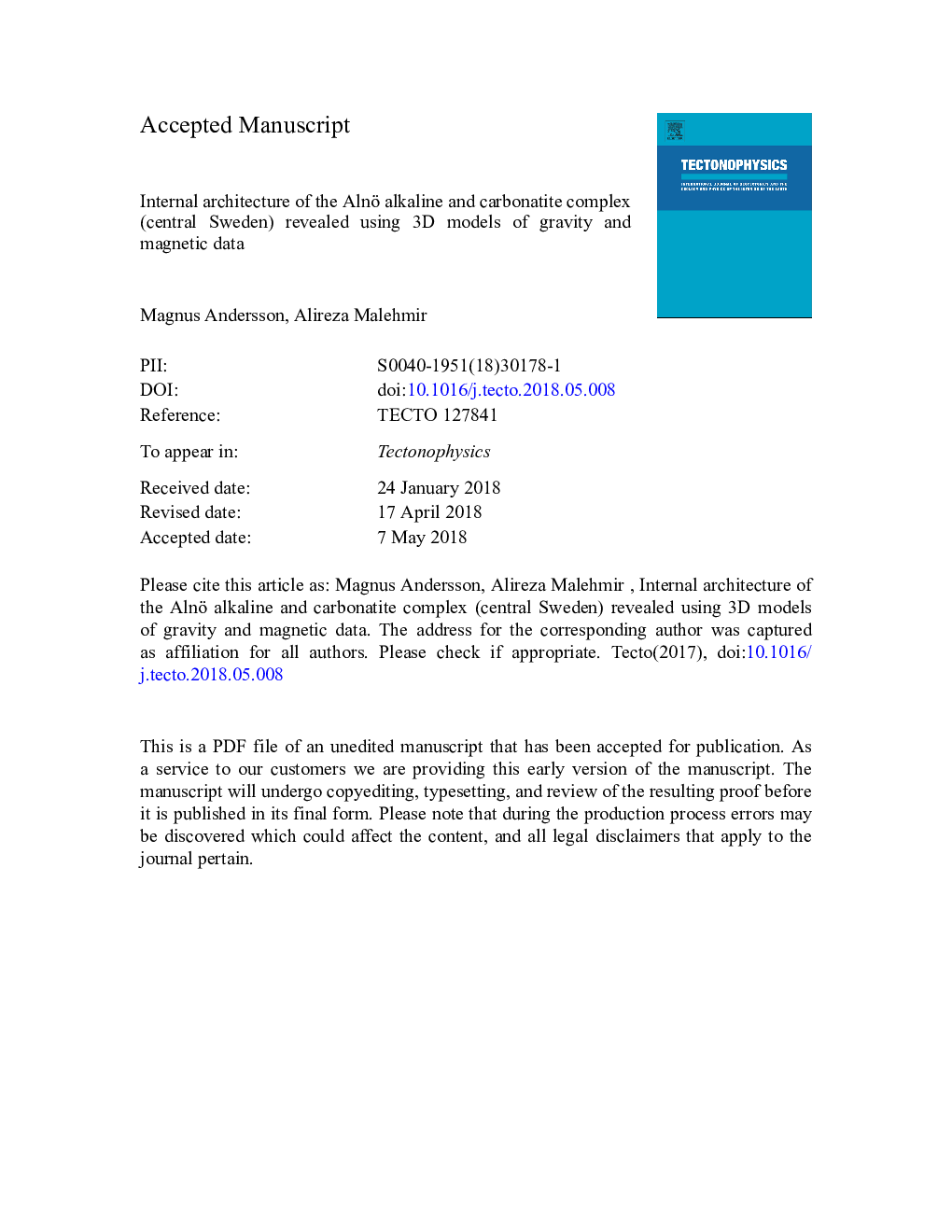| کد مقاله | کد نشریه | سال انتشار | مقاله انگلیسی | نسخه تمام متن |
|---|---|---|---|---|
| 8908640 | 1636674 | 2018 | 50 صفحه PDF | دانلود رایگان |
عنوان انگلیسی مقاله ISI
Internal architecture of the Alnö alkaline and carbonatite complex (central Sweden) revealed using 3D models of gravity and magnetic data
دانلود مقاله + سفارش ترجمه
دانلود مقاله ISI انگلیسی
رایگان برای ایرانیان
کلمات کلیدی
موضوعات مرتبط
مهندسی و علوم پایه
علوم زمین و سیارات
فرآیندهای سطح زمین
پیش نمایش صفحه اول مقاله

چکیده انگلیسی
The Alnö Complex in central Sweden is one of the largest alkaline and carbonatite ring-shaped intrusions in the world. Presented here is the 3D models of ground gravity and aeromagnetic data that confirm some of the previous ideas about the 3D geometry of the complex but also suggest that the complex may continue laterally further to north than previously expected. The data show the complex as (i) a strong positive Bouguer anomaly, around 20â¯mGal, and (ii) a strong positive magnetic anomaly, exceeding 2000â¯nT. Magnetic structures are clearly discernible within the complex and surrounding area. Both gravity and magnetic inversion models suggest that dense (>2850â¯kg/m3) and magnetic (>0.05 SI) rocks extend down to about 3.5-4â¯km depth. Previous studies have suggested a solidified magma reservoir at this approximate depth. The inversion models further suggest that two apparently separate regions within the complex are likely connected at depth, starting from 800 to 1000â¯m, implying a common source for the rocks observed in these two regions. Modelling of the aeromagnetic data indicates that a >3â¯km wide ring-shaped magnetic high situated in the sea north of Alnö Island may be a part of the complex. This could link a smaller satellite intrusion in SörÃ¥ker on mainland to the larger intrusion on Alnö Island. While the rim of the ring must consist of highly magnetic rocks to support the anomaly, the centre has relatively low magnetisation and is probably made up of low-magnetic wall-rocks or metasomatised wall-rocks down to about 2â¯km depth. Below this depth the 3D susceptibility model suggests higher magnetic susceptibility values. Worldwide alkaline and carbonatite complexes are the main resources for rare earth elements (REEs), and owing to the size of the Alnö Complex, it can be highly prospective for REEs at depth.
ناشر
Database: Elsevier - ScienceDirect (ساینس دایرکت)
Journal: Tectonophysics - Volumes 740â741, 21 August 2018, Pages 53-71
Journal: Tectonophysics - Volumes 740â741, 21 August 2018, Pages 53-71
نویسندگان
Magnus Andersson, Alireza Malehmir,